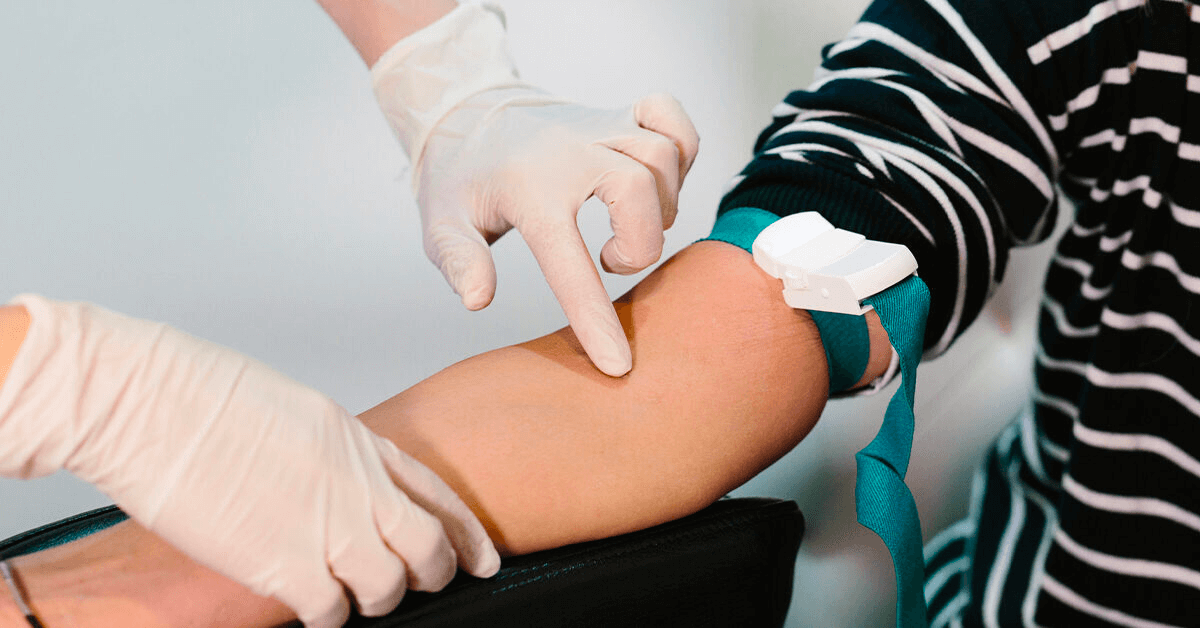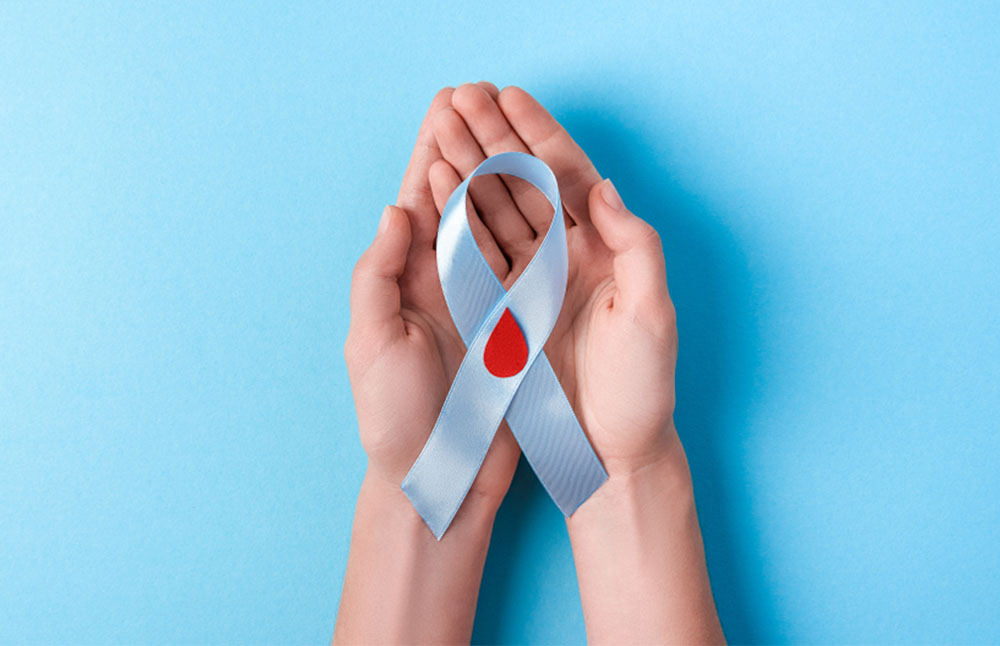
A1C vs. Fasting Glucose: Two Popular Blood Sugar Diagnostics
More worrying is that a significant number of people that have it or are at risk of getting it (in a prediabetic state) are yet to be diagnosed. Men make up the greater part of this undiagnosed populace. What’s more, there are pointers that men are more likely to suffer from diabetes complications than women.
To diagnose diabetes, a specialist or endocrinologist will have to perform a diabetes test to check patients’ blood sugar levels and concentration. Patients can get different types of tests; the two most popular and often recommended tests are A1C and fasting glucose tests. While other blood sugar tests tell whether a person has diabetes or not, these two stand out and are often compared.
This comprehensive guide compares the A1C and fasting glucose test, highlights other tests, and outlines the steps people diagnosed with diabetes can take to live healthily.
Prediabetes: The Best Time to Get Diagnosis
Prediabetes is a serious condition that gives way to the more dreaded diabetes. People with prediabetes already have an impaired fasting glucose metabolism and typically experience an increase in high blood sugar.
Prediabetes isn’t considered diabetes because the blood sugar range isn’t high enough to meet diabetes requirements despite being higher than normal. However, it’s only a matter of time before people with the condition slip into full-blown diabetes.
A staggering 96 million US adults were diagnosed with prediabetes in 2019. In a broader perspective, over one-third of adults in the country had prediabetes at the time, with projections suggesting even higher numbers in 2022.
The risk of developing diabetes after getting prediabetes is significantly high. CDC reports on prediabetes show that up to 30% of those diagnosed with prediabetes will develop diabetes in 5 years or less. Undiagnosed prediabetes patients are even more likely to slip into fully-fledged diabetes sooner.
These prediabetes-associated risks reinforce why this stage is considered the best time for people to undergo diagnosis. Notably, people in the prediabetes stage are yet to develop impaired glucose tolerance that comes with significantly high blood glucose levels. With an appropriate diagnosis, people with prediabetes can avoid falling into the diabetes range and subsequent cardiovascular disease complications that extremely high blood sugar presents.
Sadly, most diabetics go through their prediabetes stage undiagnosed, only taking the needed tests when they slip into diabetes and start experiencing certain complications. Some may even end up not getting any diagnosis until certain complications have begun to metamorphose.
Blood Tests for Diagnosis

Up to four blood tests can help diagnose diabetes and high blood sugar. These blood tests are trustworthy, and experts employ them to check the blood sugar level of people with diabetes-related symptoms. Patients may perform some of these tests themselves as glucose monitors are available to patients to self-test their blood sugar.
Typically, all tests rank blood sugar levels in numbers, and the higher the number or percentage, the higher the level of blood glucose. Among the different blood sugar tests available for treatments, the A1C and fasting plasma glucose tests are the most popular.
Subsequent sections consider how these two tests work and compare them against each other.
A1C Test
This blood test determines the percentage of hemoglobin—the protein in the red blood cell—attached to sugar and gives an average of your blood sugar level in the past 2–3 months. The A1C test is also termed the HbA1C, hemoglobin A1C, glycosylated hemoglobin, or glycated hemoglobin test.
The test is considered normal when the A1C is below 5.7%, indicating blood glucose lower than 117 mg/dL, which aligns with the estimated average blood sugar level. In prediabetes, A1C levels range from 5.7% and 6.4%, while an A1C level of 6.5% or higher suggests type 2 diabetes. The results could be questionable in some cases; in such instances, the doctor may ask the patient to return for a retest to help conclude the diagnosis.
The following table outlines the different A1C test readings:
| Type of Result | A1C Reading | Estimated Average Blood Glucose Level (mg/dL) |
| Normal A1C Result | <5.7% | <117 |
| Prediabetes A1C Result | 5.7–6.4% | 117–137 |
| Diabetes A1C Result | >6.4% | >137 |
How Does the A1C Test Work?
The effectiveness of the A1C test is rooted in the hemoglobin life cycle structure. For example, if a person’s blood glucose level is currently average but was high in the past few months, it’d reflect in the test result.
The hemoglobin records the high blood sugar of the past month, presenting as a higher A1C level. The hemoglobin cells live for about three months, so the percentage of this protein attached to glucose within this period reflects in the test result.
In essence, the A1C test shows the average reading of your blood sugar over the past three months. This gives the doctor a clear picture of your blood sugar control over time. Some people may present a wrong result if they have liver disease, chronic anemia, or kidney failure.
Ethnicity can also influence the result. Namely, people of Mediterranean, Southeast Asian, or African descent may have a rare type of hemoglobin that alters A1C results. Similarly, a decreased red cell survival can affect the A1C results.
Fasting Plasma Glucose (FPG) Test
Also termed the fasting blood glucose (FBG) test, this blood test measures the sugar level in your blood after undergoing overnight fasting. An average fasting glucose level is usually lower than 100 mg/dL. A prediabetes diagnosis is confirmed when the result sits around 100 to 125 mg/dL, while 126 mg/dL or more indicates diabetes.
Suppose your results show 126 mg/dL or more. In that case, it’d be best to retake the test on a different day to confirm your diagnosis.
The following table outlines the different FPG test readings:
| Type of Result | Fasting Plasma Glucose (FPG) Level (mg/dL) |
| Normal FPG Result | <100 |
| Prediabetes FPG Result | 100–125 |
| Diabetes FPG Result | >125 |
How Does the Fasting Glucose Test Work?
Blood glucose—or simply sugar—is the major sugar in the body. After drinking or eating, the body system breaks down the carbohydrates into sugar for energy purposes. The pancreas produces the insulin hormone, which helps transfer blood sugar into the cells in the body. It also stores part of the blood sugar for later use.
The insulin and glucose in the blood start decreasing as body cells use them up. In the case of diabetes, the body finds it difficult to regulate or control sugar. This problem could arise either because the body can’t effectively process the insulin or the pancreas isn’t producing enough insulin.
Therefore, the sugar level in the blood becomes higher than the normal range, which isn’t suitable for the body. So, the fasting blood sugar test measures the blood sugar only in the morning when you haven’t eaten. This is the best time to take the blood test as the sugar is still in its normal/unaltered range.
How A1C Blood Sugar Test Compares with Fasting Plasma Glucose Test (FPG)

Substantial research on HbA1C test comparison with fasting glucose test abound. These studies were designed to help doctors and diabetes experts determine which of the two most popular blood sugar tests is the most reliable. This section considers several of these scientific works to help patients know which test may be best for them at a particular time.
A 2010 study titled “A Comparison of HbA1c and Fasting Blood Sugar Tests in General Population” published in the International Journal of Preventive Medicine discussed how both tests play out in patients, pointing out their efficacy and reliability. The study’s objective was to highlight the importance of early diagnosis of diabetes in reducing complications by sampling random respondents from 30 different parts of Kerman city.
To ensure a cross-sectional population study, the total number of people involved in the research was 604. The test compared the HbA1c and FBS with Karl Pearson correlation to highlight their specificity, predictive, and sensitivity values in detecting abnormal blood sugar levels.
The study showcased a strong correlation between the two tests’ effectiveness in detecting diabetes in its early stages. However, the research confirmed the FBG test to be far more accurate in confirming a person’s blood sugar level, making it a more accurate test option than the Hb1AC test for early diabetes diagnosis.
Despite the result, the study confirmed the Hb1AC test to offer users good accuracy regardless. Also, the research points it out as an excellent metric for determining possible complications in diabetes’ latter stages.
The findings of some other studies deviated to an extent from what the earlier discussed research presents. Notably, one published in the PLOS One journal showed that the HbA1C was more likely to reliably highlight high blood sugar than the fasting plasma glucose test.
The study was performed on 3,523 Vietnamese respondents from the city of Ho Chi Minh, with 2,356 being women. The research’s objective was to consider which of the two blood sugar tests was more likely to detect diabetes in its early stages. The reliability of the tests was based on their capacity to determine prediabetes and diabetes.
From the study, the HbA1C was the most reliable as it detected prediabetes in 34.6% of all the women and diabetes in 9.7%. On the other hand, the fasting blood sugar test diagnosed 12.1% of the respondents with prediabetes and 6.3% with diabetes.
Based on the results, the researchers concluded that the fasting plasma glucose test is the less sensitive between the duo and, as such, may not be the most reliable. The HbA1C, on the other hand, had a significantly higher sensitivity — critical in determining diabetes in its earliest stage.
The researchers, however, acknowledged that the single population samples employed may have possibly altered the results. They highlighted the possibility of the results being different from what was recorded if larger populations were considered.
Based on the above research, determining which of the two blood glucose may depend on various factors other than capability. Both tests tend to work incredibly well in determining diabetes. However, their sensitivity levels may be different in varying circumstances.
Most health specialists usually perform several tests for their patients to ensure that they get extensive comprehensive information about their blood sugar.
The Other Two Tests for Blood Glucose Level
While the HbA1C and the FPG tests are the two major blood sugar tests, two more blood sugar tests help point out diabetes as well. These two tests complete the four major sugar tests that people with diabetes or at risk of the condition can go for, and they include the oral glucose tolerance test (OGTT) and random plasma glucose (RPG) test. The following sections examine them in more detail.
Oral Glucose Tolerance Test (OGTT)
Although this test isn’t as popular as the first two tests this guide compares, it doesn’t make it any less effective. In reality, the reverse is more likely only when compared in terms of capabilities. The only downside of this test is that it takes time to execute.
The oral glucose tolerance test ranks blood sugar levels from 0 mg/dL to over 199 mg/dL. Normal/healthy blood sugar range sits just a little below 140 mg/dL. On the other hand, any significant low or high is deemed unhealthy for patients.
Blood sugar levels running from 140 mg/dL to 199 mg/dL are unhealthy and are indications that a person is prediabetic. What’s more, blood sugar levels above 199 mg/dL suggest that a patient has diabetes.
The oral glucose tolerance test is first taken after an overnight fast. That means that patients will have to take it in the morning and at a time when it’s been at least 8 hours since their previous meal a day ago. After taking that first test, they’ll have to take a sugary drink or glucose-filled juice and repeat the test after two hours.
If the patient’s sugar level settles below 140 mg/dL two hours after taking the glucose drink, the patient is deemed to have a normal blood sugar range.
The oral glucose tolerance test is deemed highly comprehensive because it considers the blood sugar level of patients during a fast and two hours after eating a sugar-filled food. At both test times, the patient’s sugar level mustn’t be higher than 140 mg/dL. If a patient’s sugar level goes above 140 mg/dL after any of the two tests, they have prediabetes, and if they go above 199 mg/dl, they have diabetes and urgently need treatments.
The following table outlines the different oral glucose tolerance test readings:
| Type of Result | Blood Glucose Level (mg/dL) |
| Normal OGTT Result | <140 |
| Prediabetes OGTT Result | 140–199 |
| Diabetes OGTT Result | >199 |
Random Plasma Glucose (RPG) Test
As the name implies, a random blood glucose test is as random as possible. Of the four, it’s the only test a patient can take at any time.
The test—abbreviated as RPG—also measures blood glucose levels from 0 mg/dL to over 199 mg/dL. A patient with a blood sugar level below 140 mg/dL isn’t at risk of prediabetes and diabetes. Blood sugar levels from 140 mg/dL to 199 mg/dL are unhealthy and are indications that a person is prediabetic. On the other hand, blood sugar levels above 199 mg/dL indicate that a patient has diabetes.
The following table outlines the different RPG test readings:
| Type of Result | Blood Glucose Level (mg/dL) |
| Normal RPG Result | <140 |
| Prediabetes RPG Result | 140–199 |
| Diabetes RPG Result | >199 |
Often, the random plasma glucose test isn’t considered as reliable as the other top three tests due to the possibility of food influencing blood sugar levels. As such, it’s often the least reliable test that doctors and diabetes health specialists use or recommend for patients. Conversely, experts consider the FPG and the HbA1C tests as better alternatives.
Additional Notes
Irrespective of the type of test that a patient may go for, it’s crucial they get the help and recommendation of a health specialist to obtain the best diagnosis. While a wrong diagnosis isn’t prevalent, there’s a possibility that people with diabetes may have the necessary information about the appropriate test to go for at a particular time. This typically leads to false readings that could leave them at risk of hyperglycemia and hypoglycemia.
Diabetes Risk Factors
So far, this guide has focused on the different tests that can diagnose diabetes, with a special focus on the HbA1C and fasting blood glucose tests. However, to enable proper diagnosis, it’s imperative that patients are willing to get tested, to begin with.
Most people with diabetes are often reluctant to get a diagnosis, with only a significant few attending regular diabetes checkups. The effect of this popular yet health-concerning decision is that most people are only likely to know they have diabetes when it’s gotten worse.
Therefore, to encourage people to do more diabetes-related checkups occasionally, the American Diabetes Association (ADA) and the Center for Disease Control and Prevention (CDC) outline some risk factors for the condition. The aim is to enable people to make diabetes testing a priority once they fall into any of the categories.
The major risk factors of type 2 diabetes are:
Genetics
Research proves that diabetes is indeed genetic. This means that people who have an ancestry with diabetes issues are more likely to get diabetes than those who don’t. Most people who develop diabetes in their lifetime are genetically vulnerable to the condition due to inherited altered genes.
Obesity
Being obese or overweight is a serious risk factor for people with diabetes. Once a patient’s BMI (body mass index) is above the normal range (18.5–24.9 kg/m2), they’re often likely to have increased blood sugar. The higher the weight of a person, the higher the likelihood of having type 2 diabetes.
Age
The older people get, the more likely they are to have their blood sugar level above the normal range and the higher their diabetes risk. People aged 45 and above are considered the category most prone to diabetes.
Gestational Diabetes
Women who’ve experienced gestational diabetes in the past are likely to develop diabetes over time. Gestational diabetes is temporary diabetes experienced by some women during pregnancy — these women have their blood sugar levels higher than normal during pregnancy. Although the blood sugar often goes back to normal after delivery, having this condition puts the mother at a heightened risk of developing type 2 diabetes later.
Managing Diabetes After Diagnosis: The Next Step

Diagnosing diabetes gives patients and their health experts the leverage to treat the condition before it leads to serious complications. Namely, patients and their health specialists can achieve normal blood glucose levels by implementing some blood glucose control tips with the right diagnoses. These tips help prevent mild to severe diabetes complications that put patients’ lives at risk, reinforcing the need for proper and early diagnosis.
There are several ways people diagnosed with diabetes can prevent the condition from getting worse and even help them get better. Body weight plays a major role in increasing diabetes and high blood sugar. So, patients need to adopt proactive management tips that control blood sugar levels and obesity.
Below are some steps that patients can take:
Eating Healthy
The following tips will enable you to adopt healthful diet practices to keep your blood sugar level in a safe range:
Eat Fiber
A plant-based diet provides the body with minerals, vitamins, and carbohydrates. Starch and sugar are carbohydrates that help provide energy for the body. Dietary fiber—also referred to as roughage—is a part of the plant that the body can’t absorb and digest. Food rich in fiber reduces the risk for diabetes and encourages weight loss.
Eat healthy fiber-rich foods like fruits, legumes, non-starchy vegetables, and whole grains. Eating fiber-dense foods will help reduce blood sugar and slow down your body’s absorption of sugar. It also helps manage certain risk factors like inflammation, heart, and blood pressure. Lastly, with fiber, you’ll get filled quickly and energized without eating so much.
Avoid High-Calorie Diet
Food with low calories (also called a fad diet), a low-fat diet like the keto meal plan, or paleo diet can help you lose weight. However, there’s little research about their benefits in preventing diabetes in the long term. Your dietary strategy should help you lose weight and encourage a healthy weight. A strategy with healthy dietary choices should enable you to nurture it into a habit or lifestyle.
Healthy options comprising some of your food preferences and traditions can benefit you with time. A simple way to eat good food appropriately is to divide the food on your plate into three sections. The three sections should contain non-starchy vegetables, fruits, whole grains, and foods rich in protein.
Opt for Healthy Fats
Fatty foods pack a high amount of calories; as such, you should only consume them moderately. When trying to lose weight, your choice of diet should contain food with “good” fat, also known as unsaturated fat. This fat, encompassing polyunsaturated and monounsaturated fat, encourages healthy blood cholesterol levels, with vascular and heart health.
Sources of unsaturated fats include:
- Canola oil, sunflower, olive, cotton seeds, and safflower
- Fatty fish like tuna, sardines, cod, mackerel, and salmon
- Seeds and nuts like peanuts, almonds, pumpkin seeds, and flaxseed
The “bad” fats are saturated fat found in meat and dairy products; they should be minimal in your diet. Eating pork, lean chicken, and dairy products with low fat can help you limit your saturated fat intake.
Drink Tea or Coffee
Although it’s best to use water as your main beverage, studies prove that adding tea or coffee to your diet can help to prevent diabetes. Studies show that consuming coffee daily can reduce the risk of type 2 diabetes by 54%. Another research links a lower risk for the condition to daily consumption of green tea.
Coffee and tea contain polyphenols, an antioxidant that helps prevent diabetes. It’s recommended to serve tea or coffee plain or with a little quantity of milk. Using syrups or additional sugar can prevent the beverages from exhibiting their protective impact and increase your blood sugar instead.
Stay Active Physically
Exercising and consistent physical activity presents numerous benefits. These include blood sugar reduction, weight loss, and promotion of insulin sensitivity which helps to normalize the blood sugar. Adults who want to keep a healthy weight and lose weight should engage in resistance exercises and aerobic exercises and limit their inactivity.
Here are some exercise examples to engage in:
Resistance Exercise
Resistance exercise includes yoga, weight lifting, and calisthenics. Having 2–3 resistance exercises weekly helps keep you balanced with more strength and enables you to stay active.
Aerobic Exercise
Aerobic exercise includes swimming, running, brisk walking, or biking. You can engage in any of these exercises for 30 minutes every day and 150 minutes every week. Start with the moderate type before trying out vigorous ones.
Lose Some Weight
Losing some weight lowers your risk for diabetes. According to extensive studies, people who introduced changes in their diet and exercise experienced a 60% slash in diabetes risk after shedding just about 7% of their weight. The American Diabetes Association (ADA) advises that pre-diabetic people lose 7–10% of their weight to prevent the condition from progressing.
Losing weight is beneficial for healthy living in general. Use your current weight to create a weight loss program. Alternatively, you could speak to your doctor regarding your expectations and reasonable weight loss goal, like losing 1–2 pounds weekly.
Final Words & Summary
We can’t overemphasize the importance of getting tested for diabetes. It’s often recommended that people get tested occasionally and up to three times per year, even if they don’t show any diabetes-related symptoms. This is because prediabetes barely presents any symptoms to indicate that you may have high blood sugar. At this stage, only a test diagnosis will help you determine if your blood sugar is too high or low.
The A1C blood sugar test and fasting blood glucose test are among the two reliable tests that a specialist can use to determine whether you have high blood sugar. If your blood sugar after the test swings in the high range or is considerably close to being abnormally high, you may need to take proactive steps to prevent you from slipping into full-blown diabetes.
This guide outlines some of the best steps patients can take to prevent the continuous rise in blood sugar and diabetes complications. As can be seen from the different management tips highlighted, exercise and dieting are the two major factors in reducing diabetes.
For exercising, there are different ways and intensities you can adopt. The main focus is to ensure you’re losing calories — the only way to be sure of cutting off weight. On the other hand, dieting is more encompassing as it helps burn calories and decrease blood sugar levels. For this to happen, patients will need to opt for healthier food low in “bad” fats, carbs, and glucose. The aim is to eat food rich in vitamins, nutrients, and moderate healthy fats.
There are many ways patients can get foods that work for blood sugar. A dietitian is one of the best options, and so is a diabetes management app. However, the latter is often recommended due to the ease of use and the consistent update of the best tasty diabetes-friendly foods they offer.
Our Klinio app, for example, is one of the top diabetes-friendly food apps to go for. Our team of experts regularly updates our food catalog with the best meals for blood sugar sourced around the globe. The app is also great for creating weekly, monthly, and yearly food routines, making it easier for patients to determine what to eat daily.







